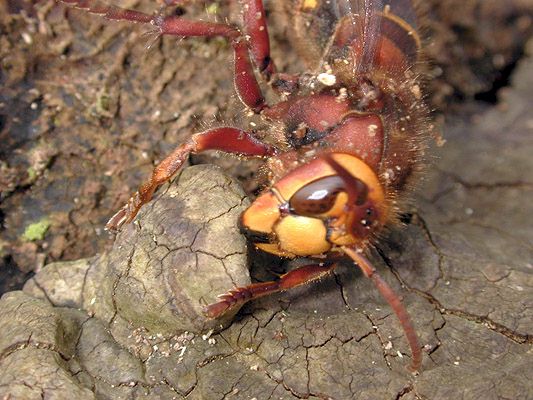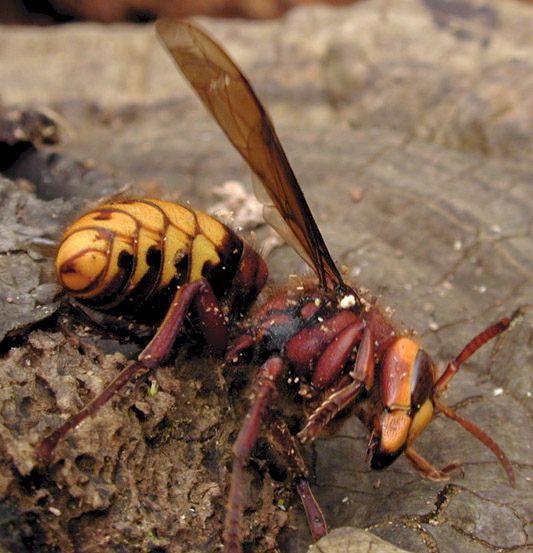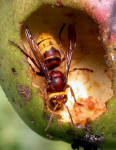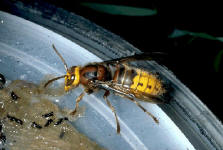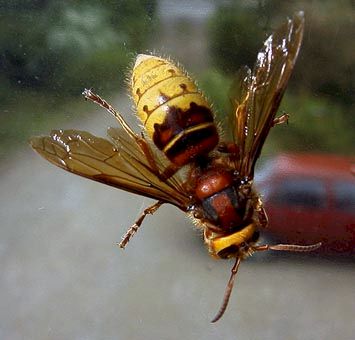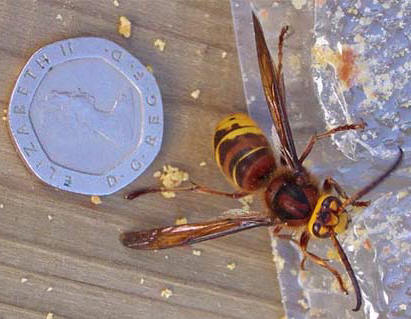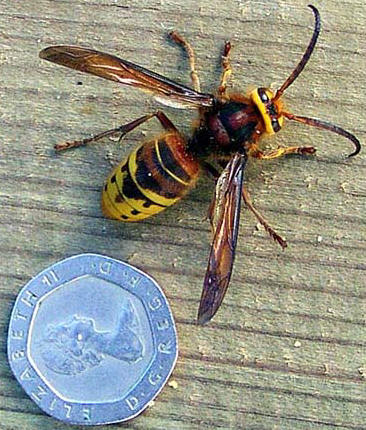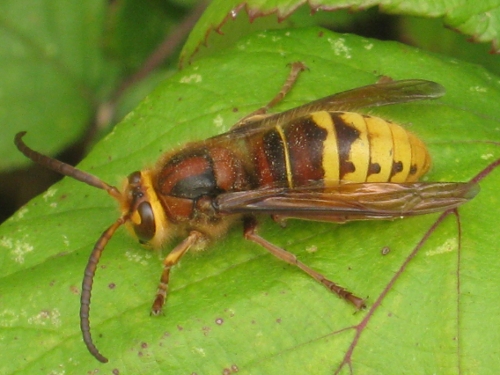Hornets in Great BritainVespa crabro vexator Harris, 1776
Text generated by Thomas Rickinger
The New Forest (Hampshire) is probably their last stronghold in the UK. Vespa crabro vexator is easily distinguished from the other european color forms by the yellow head and the reddish-brown stripe on the second gastral tergite."
Photo:
Paul West, taken in Marden, Kent, England, September 2009
News: "UK: Warming brings plague of hornets ... Source: Copyright 2004, Independent Climate change is thought to be causing the return of Britain's most formidable flying insect, the hornet. Up to an inch and a half long, weighing as much as a harvest mouse and with a powerful sting, the black and yellow-striped hornets died away during the 1960s after a series of cold, wet summers. Now Vespa crabro is on the wing again and milder weather is blamed. David Baldock of the Bees, Wasps and Ants Recording Society, says in the journal British Wildlife that it has been an "extraordinary year" for hornet sightings, with some reported in south-west Surrey, a historical first. Alan Stubbs, chairman of the insect conservation organisation Buglife, said: "East Sussex is another area where they didn't occur before but they certainly are there now. I have seen a lot in East Grinstead. "Personally, if hornets nested in my roof void, I'd welcome them. Their stings are for paralysing their insect prey, although they can be used defensively, but only as a last resort. They don't go out of their way to attack people and are actually quite docile; they won't harm you if you don't harm them. There are benefits to people in that they eat insects such as house flies. They are magnificent." Comment of Thomas Rickinger:
Distribution grid map of Vespa crabro vexator (new window)
Next page: Vespa affinis
Hymenoptera>Vespoidea>Vespidae>Vespa crabro>Hornisse>Hornet>Frelon>Hoornaar>Vespa grande>Abejorro>Calabrone Webmaster: Hymenoptera>Vespoidea>Vespidae>Vespa crabro>Hornisse>Hornet>Frelon>Hoornaar>Vespa grande>Abejorro>Calabrone
|
